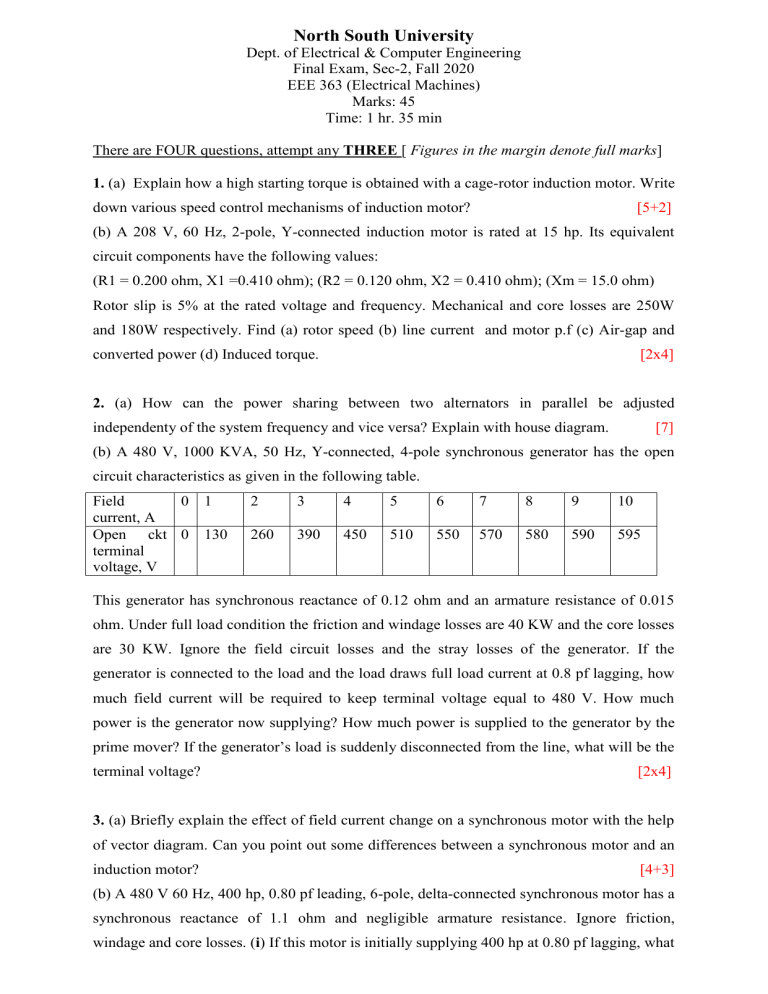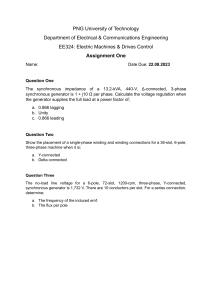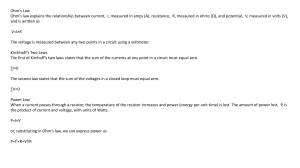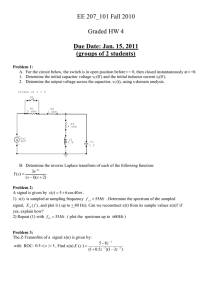Electrical Machines Exam: Induction Motors, Generators, Transformers
advertisement

North South University Dept. of Electrical & Computer Engineering Final Exam, Sec-2, Fall 2020 EEE 363 (Electrical Machines) Marks: 45 Time: 1 hr. 35 min There are FOUR questions, attempt any THREE [ Figures in the margin denote full marks] 1. (a) Explain how a high starting torque is obtained with a cage-rotor induction motor. Write down various speed control mechanisms of induction motor? [5+2] (b) A 208 V, 60 Hz, 2-pole, Y-connected induction motor is rated at 15 hp. Its equivalent circuit components have the following values: (R1 = 0.200 ohm, X1 =0.410 ohm); (R2 = 0.120 ohm, X2 = 0.410 ohm); (Xm = 15.0 ohm) Rotor slip is 5% at the rated voltage and frequency. Mechanical and core losses are 250W and 180W respectively. Find (a) rotor speed (b) line current and motor p.f (c) Air-gap and converted power (d) Induced torque. [2x4] 2. (a) How can the power sharing between two alternators in parallel be adjusted independenty of the system frequency and vice versa? Explain with house diagram. [7] (b) A 480 V, 1000 KVA, 50 Hz, Y-connected, 4-pole synchronous generator has the open circuit characteristics as given in the following table. Field 0 current, A Open ckt 0 terminal voltage, V 1 2 3 4 5 6 7 8 9 10 130 260 390 450 510 550 570 580 590 595 This generator has synchronous reactance of 0.12 ohm and an armature resistance of 0.015 ohm. Under full load condition the friction and windage losses are 40 KW and the core losses are 30 KW. Ignore the field circuit losses and the stray losses of the generator. If the generator is connected to the load and the load draws full load current at 0.8 pf lagging, how much field current will be required to keep terminal voltage equal to 480 V. How much power is the generator now supplying? How much power is supplied to the generator by the prime mover? If the generator’s load is suddenly disconnected from the line, what will be the terminal voltage? [2x4] 3. (a) Briefly explain the effect of field current change on a synchronous motor with the help of vector diagram. Can you point out some differences between a synchronous motor and an induction motor? [4+3] (b) A 480 V 60 Hz, 400 hp, 0.80 pf leading, 6-pole, delta-connected synchronous motor has a synchronous reactance of 1.1 ohm and negligible armature resistance. Ignore friction, windage and core losses. (i) If this motor is initially supplying 400 hp at 0.80 pf lagging, what are the magnitudes and angles of EA and IA? (ii) How much torque is this motor producing? (iii) If field excitation is increased by 20%, what would be the new magnitude of EA and the torque angle? [3+2+3] 4. (a) Explain how ‘initial current inrush’ comes into play in a transformer? What is the effect of ‘Iron loss’ in a transformer and what measures are taken to reduce this loss? [5+4] (b) A 15 KVA, 8000/230 V single phase transformer has impedance referred to the primary of 80 + j300 . The components of the excitation branch referred to the primary are RC 350 K and X M 70 K . If the primary voltage is 7967 V and load impedance is 3.0 + j1.5 , what is the secondary voltage of the transformer? What is the voltage regulation of the transformer? [3+3]






